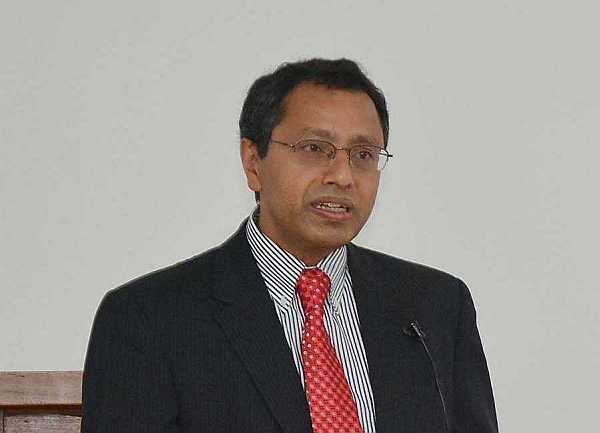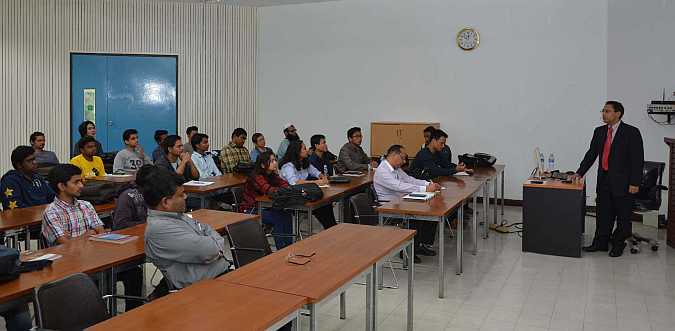
Dr. Govinda R. Timilsina
Studies suggest that greater access to electricity leads to increased people’s welfare, though empirical evidence is still limited. Narrating the relationship between electricity access and people’s welfare was Dr. Govinda R. Timilsina, AIT alumnus and Senior Research Economist, World Bank, at a talk on “Electricity Access in Developing World” delivered at the Asian Institute of Technology (AIT) on 9 February 2016.
Dr. Timilsina said that while it is intuitive to say that increased electricity access will lead to rise in income, empirical evidence is still very limited. He mentioned how lighting during night time has helped increase work hours leading to increased income. Similarly refrigeration has resulted in the creation of new markets for perishable goods, while the use of Information and Communication Technologies (ICTs) has helped farmers obtain a better market price for their products.
Quoting a study from Bangladesh, Dr. Timilsina stated that in a survey of 20,000 households, household income increased from 9-30 per cent due to increased electricity access. Similar stories have emerged from Vietnam which reported an increase in income and expenditure of over 20 per cent each. Instances of increased school enrolment, female employment, and rural household income have also emerged from India’s Human Development Survey. However, there are studies from Africa which do not confirm such a linkage. In Benin, grid access did not improve performance, except for firms whose production relied heavily on electricity. In Rwanda, while there were significant welfare gains from improved lighting, no significant difference in child study time was observed. This suggests that more empirical studies are needed, and methodologies need to be improved so that the channels of linkage can be identified.
Stating that 1.2 billion people do not have access to electricity, Dr. Timilsina stated that two-thirds of these people are in South Asia and Sub Saharan Africa. Barriers in electricity access can be found both on the supply side and affordability, he said. Suggesting policy measures to enhance electricity access, Dr. Timilsina recommended reducing regulatory and structural barriers to improve efficiency in delivering grid electricity. He also spoke about the need to lower market barriers to expand off-grid alternative electricity sources.
Dr. Timilsina, who graduated from AIT with a Master’s in 1994, and a Ph.D. in 2001, was introduced by Dr. Shobhakar Dhakal of Energy field of study. Emeritus Professor Ram Manohar Shrestha, who guided Dr. Timilsina’s work at AIT also attended the seminar.

